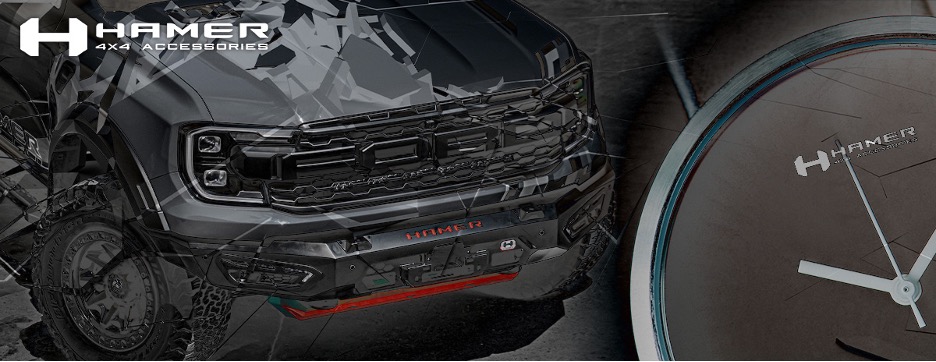NEWS & ACTIVITY
The History of Bull Bars and Their Evolution Over Time
As an off-road enthusiast with a passion for writing about 4wd cars, I am thrilled to share my knowledge about the history and evolution of bull bars. In this article, we will delve into the origins of bull bars, their uses over the years, and the latest advancements in design and technology. Let’s get started.
The History of Bull Bars
Bull bars first emerged in the 1950s and 1960s, mainly for military purposes, to protect vehicles during off-road missions. It wasn’t until the 1970s that bull bars started to gain traction among civilians as off-roading became more popular. Bull bars provided a layer of protection for vehicles and drivers, shielding them from rugged terrain and potential hazards. Over time, bull bars have evolved in both design and function. Originally made of steel and heavy in weight, modern bull bars are now crafted from lighter materials such as aluminum and high-strength polymers. This has led to a reduction in weight and increased fuel efficiency for vehicles. Bull bars now come in a variety of styles, from sleek and minimalist to more robust and aggressive.
Despite the evolution of bull bars, their primary function remains the same – to provide an additional layer of protection for vehicles and their occupants. They are particularly useful for off-roading enthusiasts who often find themselves in rough and rugged terrain. Bull bars help to prevent damage to a vehicle’s vital components, such as the radiator and engine, from rocks and other debris.
However, it’s important to note that bull bars are not without controversy. Some argue that they can be dangerous for pedestrians in the event of an accident, potentially causing more harm than good. As a result, some countries have even banned the use of bull bars on vehicles.
Ultimately, the decision to install a bull bar is a personal one that should take into consideration factors such as the driving environment, vehicle type, and safety concerns. It’s important to research and understand the laws and regulations in your area regarding the use of bull bars on vehicles. While they have evolved in design and function over time, their primary purpose remains to protect vehicles and their occupants. As with any automotive accessory, it’s important to weigh the benefits and potential drawbacks before making a decision to install a bull bar.
The Evolution of Bull Bars
As off-roading became more popular, bull bars became increasingly important for protecting vehicles and passengers from the rough terrain. However, advancements in technology led to the development of more lightweight and versatile bull bars that are not only functional, but also stylish.
Nowadays, bull bars come in a variety of styles and materials, including aluminum and high-strength polymers. These modern bull bars provide the same level of protection as their predecessors, while also being more fuel-efficient and customizable to fit a wider range of vehicles. With the evolution of bull bars, off-roading enthusiasts can now choose a bull bar that not only provides protection, but also complements the overall aesthetics of their vehicle.
Modern Bull Bars
Modern bull bars have come a long way since their inception as heavy steel attachments. They are now available in a range of styles, designs and materials that cater to different needs and preferences. Bull bars can range from minimalistic designs that add a touch of style to a vehicle, to heavy-duty bars that can withstand the most rugged off-road conditions. Materials like aluminum, steel, and plastic are commonly used to make modern bull bars, and each has its own unique set of benefits and drawbacks.
What’s more, modern bull bars are now designed to work in tandem with other 4WD accessories like winches, driving lights, and recovery gear. This not only adds to the vehicle’s aesthetic appeal, but also enhances its performance and functionality, making it easier and safer to navigate difficult terrains. With so many options available, there is a bull bar out there to suit every driver’s needs, whether it be for protection, style, or functionality.
Introducing Hamer Bull Bars and 4WD Accessories
A notable advancement in bull bar technology is the Hamer range of bull bars. The Hamer bull bars are made from top-quality materials, ensuring maximum protection for your vehicle. The range includes front and rear bars, as well as a selection of 4WD accessories to tackle any off-road challenge. The Hamer range is also compatible with a vast range of 4×4 vehicles, ensuring that every off-road enthusiast can find the ideal bull bar to fit their needs.
The Benefits of Bull Bars
Installing bull bars on your off-road vehicle provides numerous benefits, such as protection against obstacles, improving the vehicle’s appearance, and mounting winches or driving lights. Bull bars are also designed to absorb impact during collisions, reducing damage to the vehicle’s body and minimizing the risk of injury to passengers.
In conclusion
Bull bars have come a long way since their inception in the 1950s and 1960s, and the Hamer range is an excellent testament to the advancement in technology and design. With a Hamer bull bar, you can have peace of mind while you’re off-roading, knowing your vehicle and passengers are well-protected. If you’re an off-road enthusiast, investing in a top-quality bull bar should be a priority, as it can make a significant difference in your off-road experience. Follow Hamer4x4 on Facebook to get their latest updates and promotions.











































































































